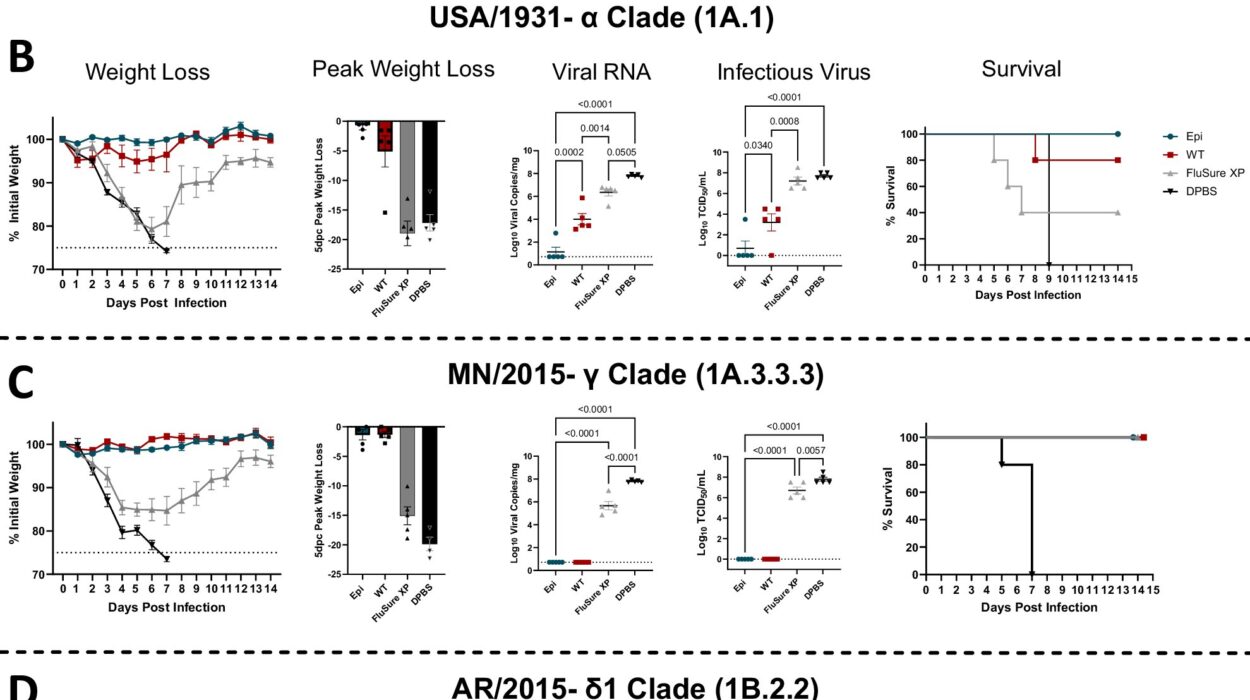In an age where dating is routinely declared “broken” and swiping fatigue has become a cultural norm, a surprising discovery has emerged from the heart of academia: college students’ perceptions of how romantic relationships develop have remained largely unchanged over the past ten years. Despite the rise of dating apps, shifting attitudes toward marriage, and a global pandemic that disrupted nearly every facet of daily life, young adults still describe love’s journey in strikingly similar terms—from playful flirtation to serious commitment.
This finding comes from a compelling new study led by Dr. Brian Ogolsky at the University of Illinois Urbana-Champaign, published in the journal Personal Relationships. By comparing how college students described the progression of romantic relationships in 2012 and again in 2022, Ogolsky and his team sought to understand whether the seismic cultural and technological changes of the last decade have reshaped the way young people think about love.
The result? The language and texture of dating may have evolved, but its core rhythm—the dance of human connection—has endured with remarkable stability.
A Decade Apart, But Still in Sync
At first glance, the study seems almost counterintuitive. After all, in the last ten years, the world has witnessed a digital dating revolution. Tinder launched in 2012, and since then, a myriad of platforms like Bumble, Hinge, and Grindr have reshaped how people meet. Social norms have also shifted: cohabitation before marriage is now more common, gender roles are increasingly fluid, and the concept of commitment itself is more nuanced.
Yet when researchers asked students at a large Midwestern university to describe the stages of a typical romantic relationship—first in 2012 and then again in 2022—their answers reflected a familiar script. Using open-ended survey responses, the researchers conducted a detailed qualitative analysis and found that both generations of students articulated essentially the same four stages: Flirtationship, Relationship Potential, In a Relationship, and Commitment or Bust.
The labels may have varied slightly. The culture around relationships certainly shifted. But the developmental blueprint? Strikingly consistent.
The Stages of Modern Love
So what exactly do these stages look like through the eyes of college students?
Flirtationship: The Spark Ignites
In both 2012 and 2022, the first stage of romance began with what students described as a flirtationship—a term blending flirtation and friendship. It’s the phase of subtle eye contact across the lecture hall, witty banter over text, and late-night chats that blur the line between platonic and romantic.
Importantly, though today’s students are immersed in a tech-saturated environment, technology didn’t dominate their accounts of early attraction. Sure, social media and texting were mentioned, but what mattered most was the vibe—the chemistry and curiosity that fuel the first glimmers of interest. Whether sparked online or in person, the essence of this stage was the same: testing the waters and trying to figure out, “Are they into me?”
Relationship Potential: Defining the Bond
If flirtation turned into regular hangouts, deeper conversations, and shared experiences, the relationship entered what students described as the Relationship Potential phase. This was the exploratory middle ground—a time of discovery and emotional vulnerability.
Here, students weren’t yet exclusive, but they were actively evaluating compatibility. It was a time of asking important questions—spoken or unspoken—like “Do I feel safe with this person?” and “Could I see a future here?” In this stage, the pair often began to spend more consistent and intentional time together, even if they hadn’t yet defined the relationship.
And although much has been said about the supposed avoidance of labels in the modern dating era, students still seemed to value clarity. They just approached it differently. Rather than assuming a natural progression into a defined relationship, many students in 2022 described having direct conversations to “DTR”—Define the Relationship—a shift toward intentional communication that may reflect growing emotional intelligence.
In a Relationship: The Label Locks In
Once the couple solidified their bond, the relationship entered its most official stage: In a Relationship. This is when labels like “boyfriend” or “girlfriend” (or gender-neutral alternatives) were introduced, signaling exclusivity and mutual commitment.
At this stage, emotional and physical intimacy typically deepened. Students described integrating their partners into broader social networks—introducing them not just to family, but to close friends, roommates, and even coworkers. Interestingly, while engagement was more commonly mentioned in the 2012 group, by 2022, cohabitation was a more prominent theme. This reflects shifting societal norms: moving in together is now often seen as a more realistic and desirable milestone than early marriage.
Moreover, today’s students were more likely to emphasize shared growth, mutual respect, and compatibility as benchmarks of relationship success—not just longevity. It’s a subtle but meaningful shift that underscores the evolution of values in modern romantic partnerships.
Commitment or Bust: Crossroads of the Heart
Finally, relationships arrived at the pivotal stage the researchers called Commitment or Bust. This is the emotional fork in the road: continue building a life together or part ways.
Here, students spoke of evaluating long-term potential. Conflict often emerged, especially when goals diverged or when partners realized they wanted different things from the future. In some cases, students described navigating through these challenges and finding even deeper commitment. In others, it was a time of hard conversations, breakups, or the painful realization that love alone isn’t always enough.
Interestingly, the 2022 group described this stage in more diverse and complex terms. There were fewer references to marriage as an assumed next step and more mentions of ambiguity—wanting different kinds of futures, or taking a break to focus on personal development. This nuance suggests that while the structure of romantic progression remains intact, the expectations tied to each stage have grown more fluid.
The Myth of the Dating Apocalypse
One of the most striking takeaways from this study is how it challenges the dominant narrative that technology has completely disrupted dating.
Yes, apps like Tinder and Bumble are ubiquitous. Yes, digital communication plays a larger role in today’s relationships. But according to Ogolsky and his colleagues, these tools have not fundamentally altered how young people conceptualize the development of love. Instead, they’ve simply been folded into age-old rituals—new media supporting timeless behaviors.
Students still crave connection. They still look for trust, chemistry, emotional safety, and growth. In both 2012 and 2022, participants described dating as a process of discovery, negotiation, and transformation. What’s changed is less the destination and more the flexibility in how and when people arrive.
“The stability over time was surprising,” Ogolsky told PsyPost, “as was the infrequency of mentions of technology.”
A Mirror of Society’s Shifts
That said, subtle changes in students’ responses do reflect broader cultural evolutions. Compared to a decade ago, today’s students were more likely to:
- Describe ambiguous relationship statuses (e.g., “talking,” “situationships”).
- Discuss intentional communication about defining the relationship.
- Include cohabitation as a key milestone.
- Express ambivalence about marriage as a necessary goal.
These shifts suggest that while the structure of romantic development hasn’t changed drastically, its cultural context has. And that matters. The modern landscape allows more space for questioning, redefining, and individualizing love—a trend that mirrors larger movements around identity, autonomy, and emotional self-awareness.
Why This Research Matters
Romantic relationships during emerging adulthood—especially those forged on college campuses—are more than fleeting affairs. They help shape patterns of attachment, influence long-term mental health, and lay the foundation for future partnerships.
Understanding how young people perceive and experience love is critical for designing better relationship education, campus support systems, and mental health services. If we want to help students navigate love and heartbreak, we need to know how they define those experiences in the first place.
And perhaps most importantly, this research reminds us that even amid cultural upheaval, love continues to follow a recognizable beat. The platforms may change. The language may shift. But the desire for connection, understanding, and partnership endures.
Looking Ahead: Expanding the Lens
Of course, the study has limitations. Both samples were drawn from the same university and included mostly white, heterosexual students. That means these findings might not capture the full diversity of romantic experiences, especially for LGBTQ+ students, students of color, or those from different cultural backgrounds.
Future research should explore how relationship models vary across identity lines, regions, and cultures. And as dating technology continues to evolve—with AI matchmakers, virtual reality meetups, and decentralized social networks on the horizon—continued inquiry will be essential.
Still, the study’s core message resonates beyond its scope: love, at its core, is a human constant.
The Enduring Power of Connection
In a world obsessed with disruption and innovation, it’s easy to forget that some aspects of human life remain remarkably steady. This study is a powerful reminder that while tools, trends, and timelines may shift, the way people fall in love—and move through its joys and challenges—remains deeply familiar.
So the next time someone declares that dating is doomed, it may be worth remembering: from flirtationships to commitment, college students are still writing love stories that echo those of the generations before them. The words may change, but the melody plays on.






